
The Definitive Guide to Bamboo Food Packaging
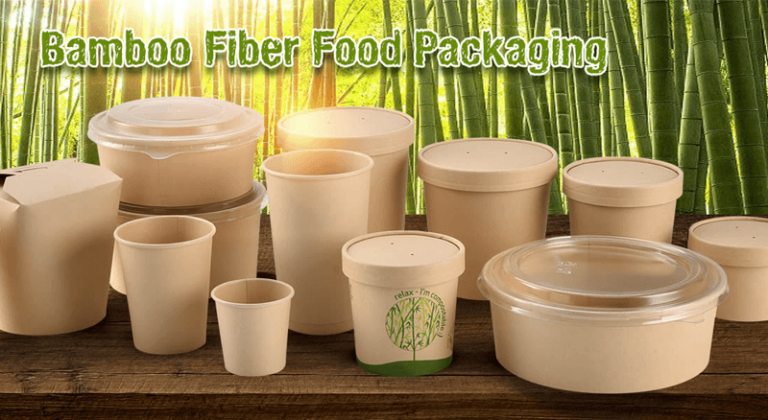
With the rising levels of pollution globally, one of the main contributing factors to soil and air pollution is the plastic packaging of all products. As a result, recycling efforts have increased considerably in every part of the world; however, it is not enough. Bamboo food packaging as a new wave of sustainable and eco-friendly packaging solution has been introduced.
Bamboo packaging for food is bio-degradable, naturally sourced, safe for the environment, and clean for human beings
As bamboo food packaging has many environment-friendly benefits. It is truly the next step in the direction of an eco-friendly world led by sustainable development.
Why is bamboo packaging good? Here is the definitive guide to bamboo food packaging
What is Bamboo Food Packaging?
Bamboo food packaging as the name states is food packaging materials made out of bamboo fiber. Almost all types of food packaging and table essential products can be made with bamboo including tableware, cutlery, utensils, and catering supplies.
You might be wondering if bamboo packaging is also a tree/plant product. How does it really solve the problem? Will the production of bamboo food packaging results in less deforestation?
This is where bamboo defines itself as a sustainable material. Bamboo is not a tree; it is actually a type of grass. Across the world, there are over 1000 species of bamboo most of which are found in Asia. It is one of the fastest-growing plants in the world.
The time for bamboo to mature and be harvested is much quicker compared to other hardwoods. This allows reforestation efforts will make bamboo more sustainable than most other types of wood used in packaging.
Let’s take a look at the advantages of bamboo that makes it a truly sustainable and biodegradable packaging solution.
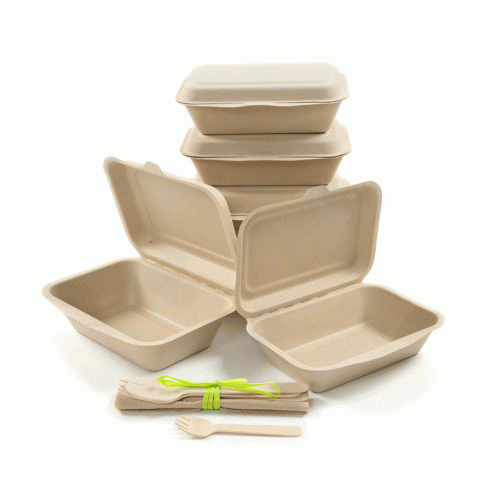
Why Bamboo Packaging Is Sustainable and Biodegradable?
Growth Speed
As mentioned earlier, bamboo is one of the fastest-growing plants globally. The growth speed is so fast that some bamboo species can grow up to 35 inches in a single day. The fast growth speed allows bamboo to grow and mature in a short span of around 3-5 years maximum.
Some hardwood trees can take 100 years to grow and mature.
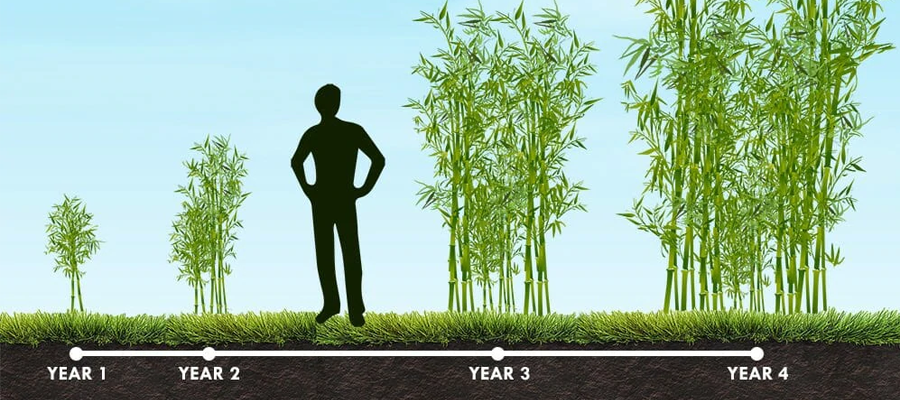
Environmental Benefits
Using bamboo for food packaging might be new but bamboo has long been used in many different sectors especially construction and scaffolding in various parts of the world for many years. Bamboo is being used as an alternative to wood trees, it will slow the rate of hardwood deforestation.
Bamboo also has environmental benefits in reducing large amounts of carbon dioxide in the atmosphere. It is estimated that bamboo plants can reduce up to 35% of carbon dioxide in the climate and supply more oxygen into the air. The roots of bamboo trees also act as soil barriers that reduce soil erosion drastically. These factors make bamboo very sustainable and eco-friendly.
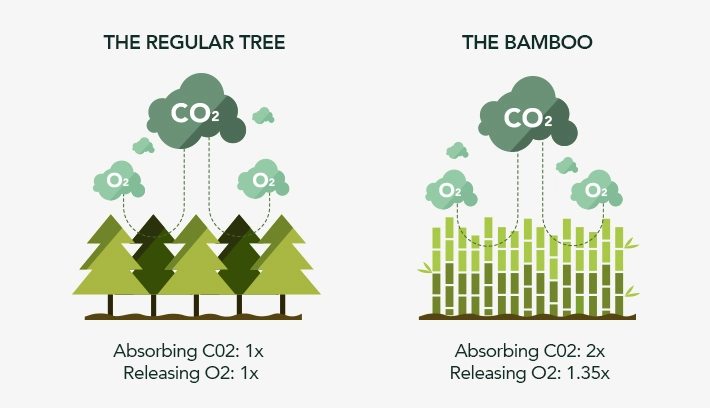
Biodegradability
Bamboo is a 100% natural product that decomposes quickly in the soil, which means almost all bamboo products is biodegradable and safe for composting. The time needed for bamboo to fully decompose and biodegrade depends on the environment.
In a compost environment, the process of decomposition can be completed within 4-6 weeks. However, the same product when left outside can take up to 5-10 years to fully decompose. So, it is crucial to properly dispose of the products even if they are eco-friendly and biodegradable to reduce the strain on the environment.
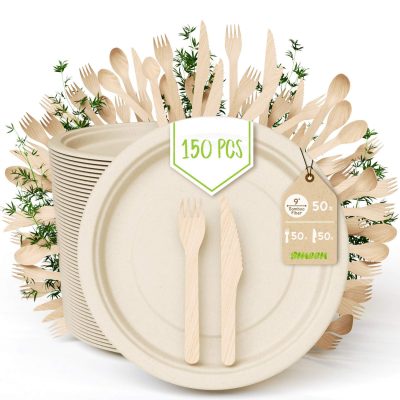
- Recycling
In terms of recycling, bamboo packaging products can be recycled to a certain extent as long as they are not chemically treated. Some bamboo products are 100% recyclable and can be used to make other new products when recycled. Other products have a shorter recycling window and are used as compost to fertilize the soil.
Bamboo packaging is a zero-waste product as bamboo will fully biodegrade in the soil or be recycled and manufactured into a new product. These factors make bamboo highly sustainable and eco-friendly as well.
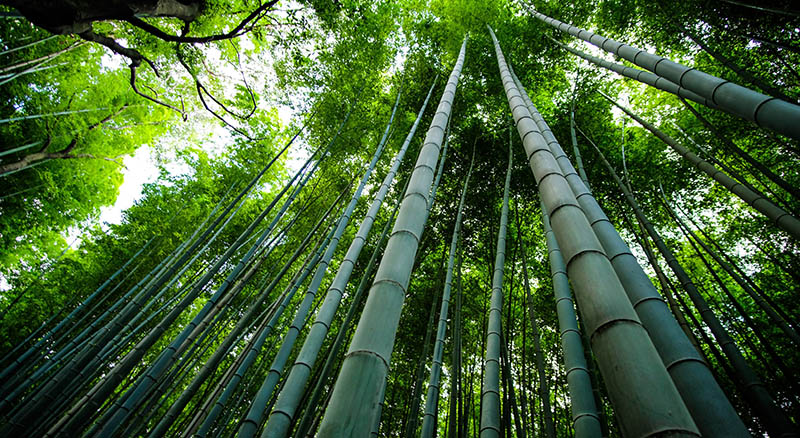
No Fertilizers & Pesticides Required
One of the best parts about bamboo is that it can be grown on depleted soil, which means bamboo cultivation does not require particular soil or climatic requirements to ensure rapid growth. It also does not require fertilizers and pesticides to grow.
Fertilizers and pesticides often cause damage to the soil and the environment; damage to the environment, in turn, affects the health of human beings directly and indirectly. That is why bamboo is an ideal sustainable and eco-friendly product for all types of food packaging manufacturing.
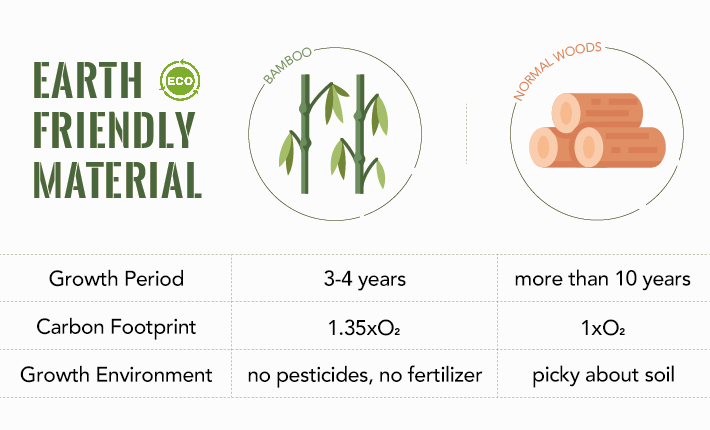
Societal Impact
Bamboo has a considerable positive impact on the communities that cultivate this plant. Bamboo improves the economy of the community.
How? Growing bamboo in the portions of soil that is not fit for food crop, Bamboo cultivation gives people a chance to improve their income opportunity. The quick maturing and harvesting period of bamboo allows the soil to be reused quickly at no loss of space.
Why Bamboo Food Packaging Is Antibacterial and Absorbs Odour?
Yes, bamboo food packaging offers these two benefits. It is antibacterial, antifungal, and absorbs terrible odour. But how does the packaging do it? Let’s find it out.
Bamboo Kun Component
The antibacterial benefits of bamboo come from the Kun component of bamboo. It is a naturally occurring bio-agent that provides antibacterial benefits to bamboo. Bamboo plants are naturally resistant to pests and other harmful bacteria that can harm the plant in its natural environment.
So, the presence of the bamboo Kun component guarantees that you will not need pesticides to control pest infections during the cultivation of bamboo. This factor is a significant benefit of bamboo over other materials.
The antibacterial benefits of bamboo pass on to bamboo packaging manufactured using natural bamboo, which doesn’t use any chemical processes. The antibacterial benefits mean that the food stored in the containers is safe from bacteria and will be fresh for longer.

Antifungal Properties
The bamboo Kun component also offers antifungal properties of the bamboo plant. It will make bamboo naturally resistant to different types of fungi in its natural form. The antifungal properties of bamboo keep itself safe from fungal growth that can harm the quality of bamboo produced and the growth rate of the bamboo. The protection against fungi also proves very effective, mainly when bamboo is used to make food packaging materials.
In food packaging, antifungal properties can help your food items be safe from spoilage for a longer time, allowing you to get a longer shelf life for your food service. In addition, bamboo packaging is free from bacterial or fungal infection in many natural food packaging materials.

- Longer Shelf Life of Food
When it comes to food packaging, the longer the shelf life of the food is good for health. The antibacterial and antifungal properties of the packaging material (Bamboo) are indeed helpful in providing a longer shelf life.
However, there are other factors as well. The strength of the bamboo fiber can protect against UV rays and preserve temperature. The tensile strength of bamboo fibers is more than steel. The excellent power allows even disposable bamboo containers like bamboo paper bowls to be more resistant to tear and hot food than other disposable food containers.
UV protection keeps your food from being spoilt and increases the overall shelf life of the foodservice. Bamboo food packaging allows people to consume the food as fresh as possible. As bamboo can preserve the temperature of the food for a long time
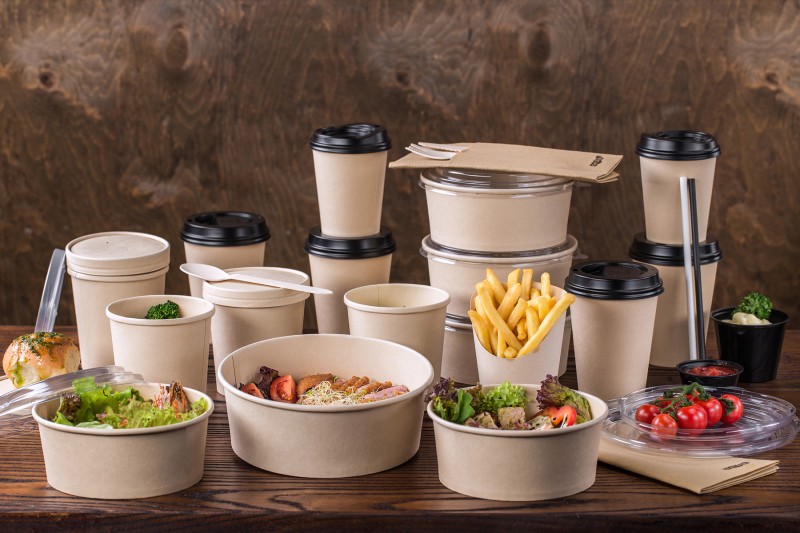
Odour Absorbing Properties
Bamboo is a naturally porous material that allows the material to be a natural deodorizer. The texture of bamboo, which is quite loose, enables the material to be free from foul odours. The properties mean that bamboo does not have any ink smell when printing. It is a common problem the smell of the material influences the food and can turn away some people.
But this is not true; bamboo does not have any smell itself. But the odour-free property of bamboo food packaging makes it very popular among restaurants. It will keep their food in containers without extra flavour and aroma of the food itself. The odour absorbing properties of bamboo is one of bamboo’s best features that make it a perfect alternative to plastic in the food packaging industry.
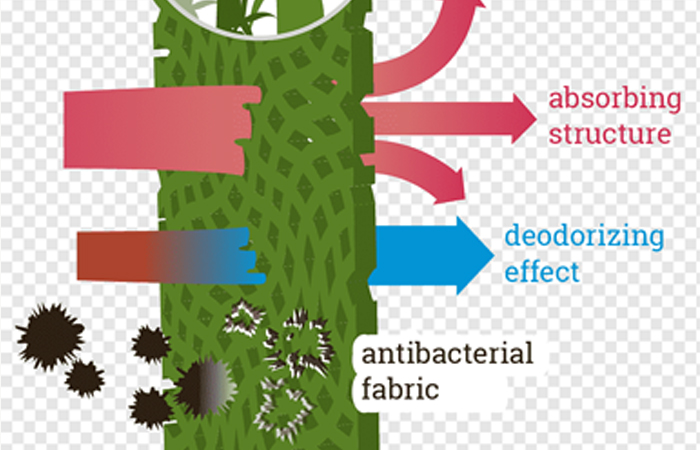
Why Bamboo Paper Is Eco-Friendlier and Safer Than Wood Paper
Bamboo has plenty of benefits, as discussed in this article in detail. The eco-friendly and sustainable features of bamboo make it a better alternative than plastic on any given day.
But what if you compare it to food packaging made from wood paper? Is bamboo food packaging still the better and more eco-friendly choice? Yes! Why? Let’s look at the reasons
Bamboo Pulp Paper Does Not Use Any Chemicals or Bleaching
Bamboo pulp paper used to manufacture disposable bamboo paper bowls or cups is a very eco-friendly product. Creating bamboo pulp paper is quite similar to that of cardboard and wood paper.
However, there is a major differentiating factor that bamboo does not use any chemical processing or bleaching during bamboo pulp paper manufacturing.
The lack of chemical processes and bleaching allows bamboo pulp paper to be more eco-friendly and for bamboo to retain all its sustainable benefits
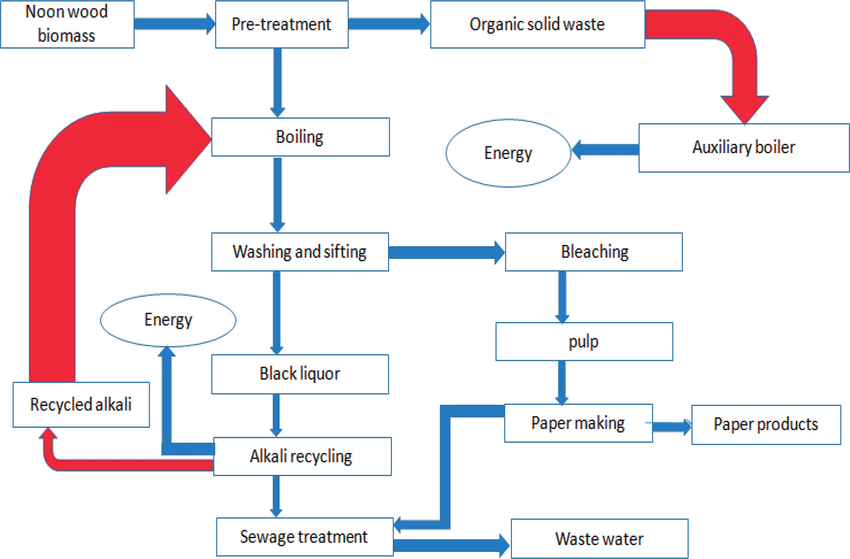
Bamboo Pulp Paper Has Greater Tensile Strength
Bamboo has a shockingly high tensile strength at 28,000 pounds per square inch which is higher than steel. Great power makes bamboo products extraordinarily sturdy and great for all disposable container uses.
Data has also shown that bamboo can be used as a substitute for reinforcements of reinforced concrete.
These numbers prove that bamboo paper disposable food packaging can hold any food packaging without the problem of wear and tear, especially when it is single-use.
Furthermore, the tensile strength of bamboo pulp paper far exceeds that of kraft paper. This factor makes bamboo pulp paper food packaging items infinitely better than wood paper food packaging.

Bamboo Pulp Paper Is Stiffer Than Wood Paper
Data shows that papers made from longer fibers are generally ones that have the most tensile strength in comparison to papers that are made from shorter fibers.
Bamboo has medium to long fibers that provide greater tensile strength to bamboo pulp paper.
In food packaging and containers, bamboo pulp paper is less porous and won’t let water and other liquids pass through quickly. It will make bamboo retain its strength and shape for a long time without any problems.
The main reason is that the cellular structure of bamboo itself has thicker cell walls and smaller cell lumens. These structural factors make bamboo less flexible and help bamboo paper retain its tensile strength when used for food packaging. (paper bowl; paper cup; paper box)
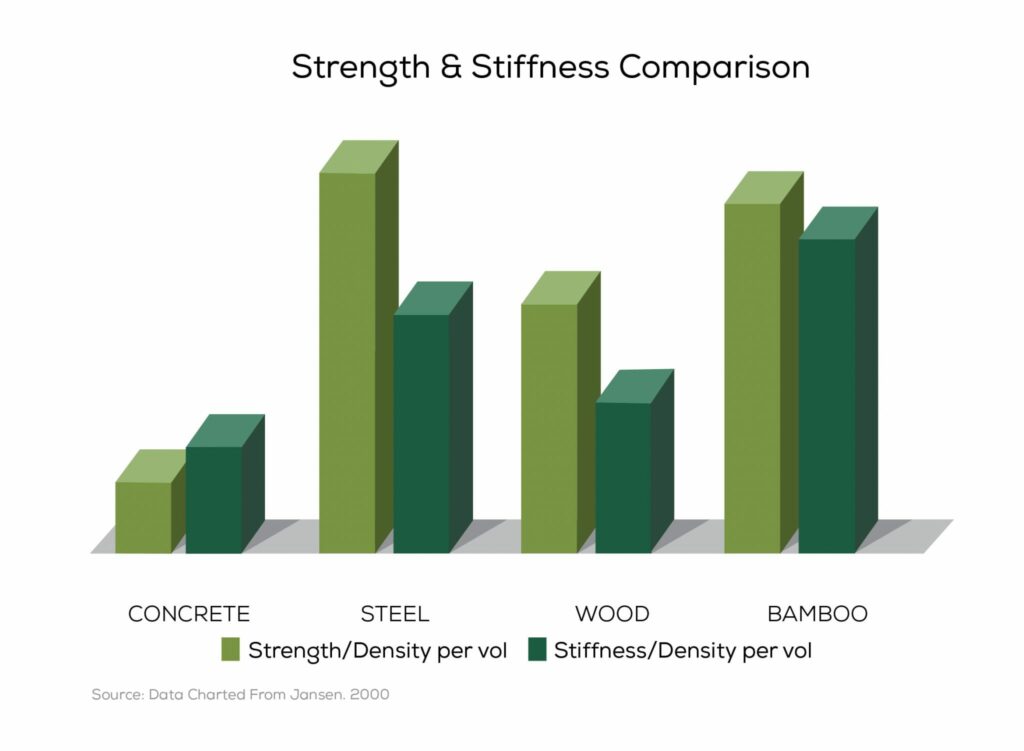
Bamboo Paper Is More Sustainable
Wood paper made from soft and hardwoods takes around 100 years to grow back after they are cut. For bamboo, the growth period is merely 3-5 years at most. Bamboo also does not require to be planted for a second time.
After you cut bamboo, the roots remain in the ground and continue to grow from the point where you missed them.
The basis allows the roots to hold on to the soil and stop soil erosion while keeping the soil health great. These features make bamboo more sustainable for disposable or one-time-use food packaging.
In addition, bamboo is a more sustainable and eco-friendlier choice than hardwood or softwood paper products that are harder to regrow.

What Is the Advantage of Bamboo Supply Chain?
Bamboo is a significant raw material for pulping and papermaking, especially in the East Asian region, because it is a commonly available and fast-growing plant. Most bamboo pulps are made in China.
In 2017, China’s entire bamboo pulp production capability exceeded 2,400,000 tons. The majority of the bamboo pulp (approximately 80%) is used to make home paper grades. It is excellent potential for bamboo cultivation and can be made for food packaging.
In addition, local authorities in China support bamboo cultivation and improve transportation facilities to encourage the use of bamboo for pulp manufacture.
The China Paper Association formed a dedicated sub-committee of the Bamboo Pulp Working Committee in 2016 to speed up the research of bamboo pulping innovation and improve cooperation among paper mills and research institutes. As a result, as per the 2017 Almanac of China Paper Industry, numerous new bamboo pulp & paper developments have been proposed in China’s Sichuan Province.

Why KFC Chose Bamboo paper as The Permanent Packaging Solution?
In June 2020, KFC Canada announced that they would be replacing all of their chicken and poutine buckets with bamboo buckets. In addition, they also announced the goal of replacing buckets with bamboo packaging by the end of 2021. This replacement will reduce around 55 tons of plastic waste per year caused by plastic poutine and chicken buckets.
This permanent move is a great direction for a global brand like KFC in setting the bar for eco-friendliness, biodegradable, and sustainable packaging.
The main reason behind this move is KFC Canada’s innovation manager wants a new, better sustainable disposable food packaging solution.
Bamboo is incredibly renewable, with one of the fastest growth rates globally. And it is also naturally antibacterial and completely biodegradable. These features make bamboo the perfect eco-friendly and reliable packaging solution for (KFC) and guarantee to keep harmful waste out of Canadian landfills.
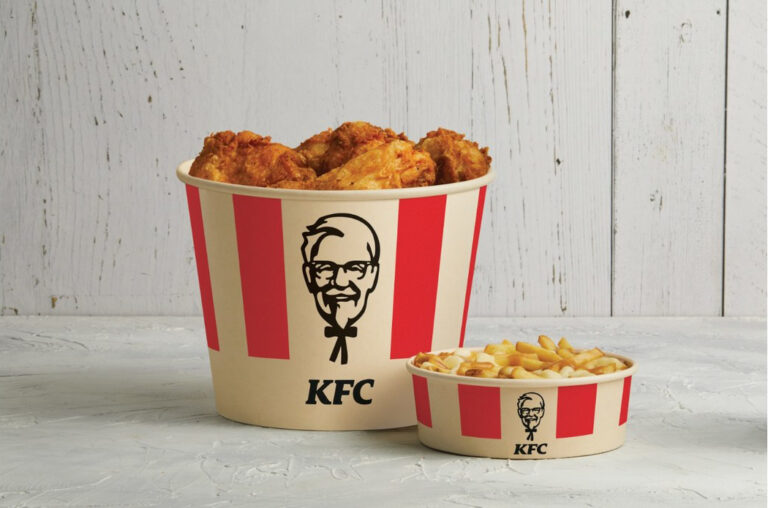
Conclusion
With all the information about bamboo pulp paper food packaging, bamboo is no better choice when compared to practically all other packaging materials. The sustainability and eco-friendliness of bamboo pulp paper are hard to match with other materials.
With the world realizing and adapting to the needs of sustainable development, bamboo is a new eco-friendly choice that helps every user reduce their carbon footprint and make contributions to the planet, and consideration towards the future and subsequent generations.
Therefore, it is time for the world to adopt a new packaging standard by embracing bamboo pulp paper. The only question that remains is, are you ready to take the shape of the future of this planet?
About Us
YANXIYAN is a 10 years foodservice packaging expert. If you are looking for a professional packaging solution and advice, Just message us.
Recent Posts
Related content

Full Guide to the Types of Paper Bags(2023)
Full Guide to the Types of Paper Bags(2023) With its biodegradable and eco-friendly characteristics, paper bags contribute to the sustainability of the environment. Today we

17 Best Types of Eco-Friendly food packaging in 2023
17 Best Types of Eco-Friendly food packaging in 2023 Today, I will dive into the fascinating world of eco-friendly food packaging. As sustainability and environmental

The Ultimate Guide To types of ice cream packaging (2023)
The Ultimate Guide To types of ice cream packaging (2023) Ready to dive into the sweet world of ice cream packaging? Today, In this guide,

Can You Recycle Ice Cream Cartons?
Can You Recycle Ice Cream Cartons? In this article, I will share valuable information about ice cream carton recycling, including common types of materials used

The Ultimate Guide To Food Delivery Packaging in 2023
The Ultimate Guide To Food Delivery Packaging in 2023 Today I will show you everything you need to know about food delivery packaging. In this

Best Disposable Bowl for Hot Soup:All You Need To Know (2023 Update)
Best Disposable Bowl for Hot Soup:All You Need To Know (2023 Update) What is the best disposable bowl for hot soup? In this article, you

3 Responses
Chinese seafood dishes, from steamed fish to spicy prawns,
highlight the freshness and delicate flavors of the ocean.
How can I get supplies of the Bamboo Packaging Products please?
contact us [email protected]